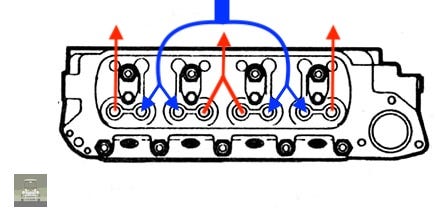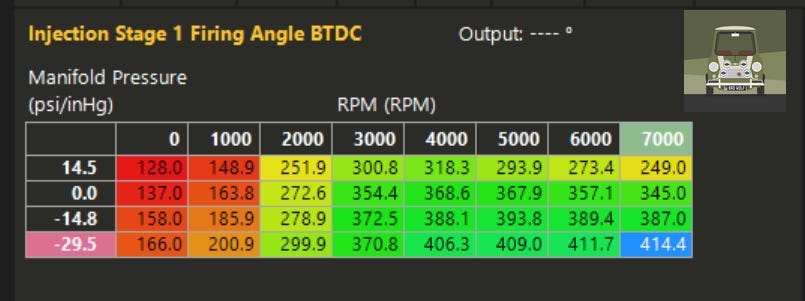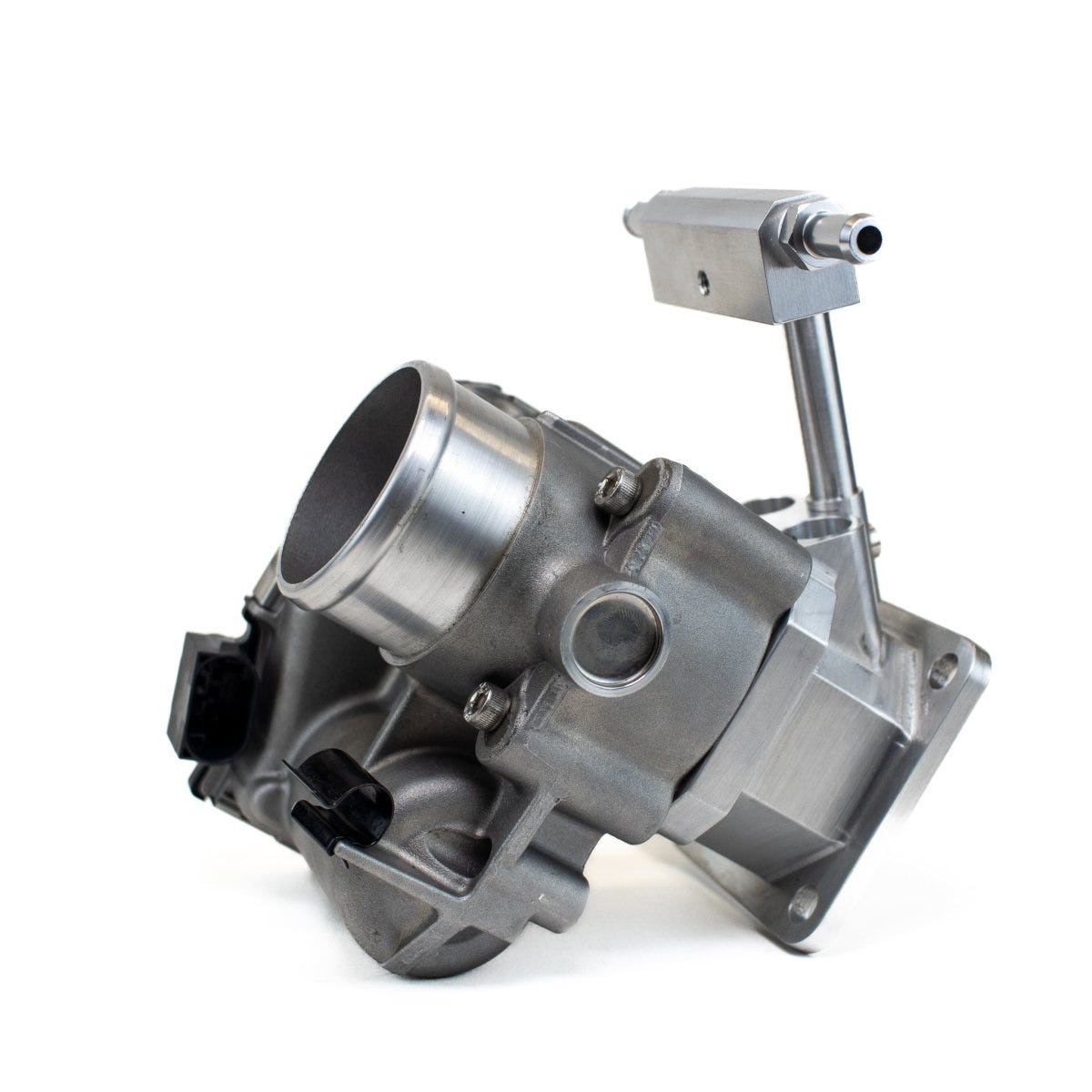Charging Robbing on a Fuel Injected A-Series
One of the most divisive topics related to EFI on a classic mini, the concept of charge robbing on the 5-port head, and its impact to getting fuel injection working properly. Lets debunk some myths...
As someone who produces fuel injection parts for the Classic Mini’s you probably wouldn’t be surprised to find out that I receive a ton of questions about how these things work. In addition to these questions, I often hear some pretty wild misconceptions and misinformation spread on social media or other outdated publications.
Today, I wanted to dive into one of the biggest misconceptions related to fuel injection, as it relates to the Classic Mini, charge robbing!
Notable Terms used in this article:
EFI - Electronic Fuel Injection
ECU - Electronic Control Unit
Charge Robbing makes Fuel Injecting Impossible
The phrase I see posted online constantly, even parroted by experts. Thinking about this, I suspect it’s due to some outdated technical write-up from the last 20-30 years that never got revised or updated. As a result, people have been posting this as gospel online for years.
What is charge robbing?
Let’s start with what charge robbing actually is in a practical sense. The mini has a “unique” (see also “bad”) design for its original cylinder heads. They use something called a Siamese Port head.
What this means is that both the intake and exhaust ports are on the same side of the head. Where it gets especially tricky is that each cylinder does not have its own intake manifold branch. Meaning cylinder 1 and 2 use the right side of the intake manifold, while cylinder 3 and 4 use the left side as viewed from the front of the car. This means that as fuel/air is being pulled into the cylinders, there are scenarios where a cylinder can rob/steal that mixture from the other cylinder in its shared port.
This is, at a high level, the reason why Classic Minis always have slightly leaner outer cylinders (1 and 4).
Why does this matter for EFI?
In a traditional carburetted setup, your carb would produce what’s called a “wet manifold” environment, which essentially means, the more air that comes in, the more fuel gets pulled in from the float bowl via the venturi effect. This ensured that there was fuel on the way to cylinders in effectively every engine load scenario.
Even with this setup, though, charge robbing is still happening, though it’s mitigated enough to allow the car to run properly and without failures.
In EFI setups, injectors behave differently. Meaning, instead of just dumping fuel like a firehose, they “pulse” and provide different volumes of fuel depending on your fuel map and where you are currently located in the load table. The way injectors work in detail could be a total writeup on its own, so I won’t go too deep into this.
But since they are pulsing, you are not automatically receiving fuel delivery like the carb was previously delivering, and thus, if not configured properly, you will exacerbate the charge-robbing issues.
How do you fix this?
In some of the legacy EFI kits on the market today, such as the one from Specialist Components, you will find some pretty creative wiring to “double-fire” the injectors, as well as some interesting mapping going on with injector angles. Setups like this did this because at the time, ECUs didn’t have a good solution built into them from the manufacturers.
In 2025, this issue is completely managable with the correct ECU configuration: injector firing method, injector angle setup, and correct injector sizing.
Correct Injector Sizing
This one is probably the most important. And that is the selection of the most suitable injectors for your setup. Many people think “bigger injectors = more better” which is not the case. You need to have the correct amount of flow for the engine size and power expectations. Larger injectors tend to have a harder time dealing with idle, while smaller injectors tend to max out at the top end. This is not an absolute rule, though, and in recent years, we have seen some pretty amazing advancements in the high-flow injector space. Below you will find a very high-level table of injectors for the Classic Mini.
Siemens Deka 630cc - Good for standard A-series or A-Series with lower boost
Bosch 731cc - Best tested for High Boost/High Flow Engines
After installing your injectors, it is also absolutely vital that you input your injector dead times. If you purchase them from the links above, Speeding Parts can provide you with this documentation. This tells your ECU have quickly the injectors can pulse and how long it takes to “recharge” between pulses.
Firing Pattern/Method
Most ECUs available these days offer a wide variety of injector firing options. With most Mini EFI setups, you are going to be targeting the same underlying behavior that the carb was producing. Each ECU company names this something slightly different, but for Haltech ECUs and Speeduino setups, you will be using batch firing.
Batch firing
As it works in the Haltech setups, it divides your injector outputs (2 outputs/injectors in our setups) into two groups, which are fired alternately.1
Pair this with an injector firing order of “every 180 degrees” to ensure one injector is firing every stroke. Operating your injectors in this method will ensure they are not maxing out their duty cycle and will set you up for configuration of your Injector Angle. Which I will get into next.
Some people may be tempted to use Multipoint firing; however, we have found that with our modern setups, this will quickly max out the duty cycle of your injectors, leading to underfueling or your injectors dropping out and not providing fuel at the correct time. This may, however, be a viable option for some really advanced and low-latency Injector Dynamics injectors; however, we have not yet tested this theory in our test bench.
Injector Firing Angle
Now we get to the last item in our configuration. Injector firing angle, which, put plainly, is how soon before TDC the injectors are triggering (based on the length of your intake and velocity of air). This is the “silver bullet” of information that many who have attempted injection setups in the past have overlooked or not been privy to.
The reason this is important is that it dictates and controls when the fuel begins its (extremely fast) journey into the engine from the injectors. Timing this firing of the fuel is vital to ensuring your fuel makes it to the correct cylinder and isn’t sent to the wrong cylinder in the shared port.
After extensive time on the dyno, Classic Mini DIY has established a preliminary set of firing angles for the Bad Wolf Turbo Build, which can be adopted in other builds as a great starting point.
Some things to note:
Based on the use of the Bosch 731cc Injectors
Based on a drive-by-wire setup, not cable-driven throttle bodies
These are a baseline and may require tweaking for your setup
The link below is to our Google sheet where I will keep these values updated in the future. Additionally, if you would like to support the channel or have an EFI Mini project you are working on, consider purchasing the base map available in my store.
Injector Firing Angles - https://docs.google.com/spreadsheets/d/1pS5iifM54nkaMmotSRnsUrgD_CEoOhWv2oUcj9mGvBk/edit?usp=sharing
Base Map - https://store.classicminidiy.com/collections/efi-base-maps
Notable Mention
When considering your setup, it is worth mentioning that in addition to these advances in easy control in your ECU, advances in throttlebody design, such as drive by wire, have made EFI conversions even easier on older vehicles with unique fueling needs. These electronic throttles are considerably safer and more reliable when compared to the standard cable throttle. Allowing automatic fine-tooth control of idle with simple configuration in your ECU.
Shameless plug - Classic Mini DIY Drive By Wire Throttlebody
Summary
Hopefully, for those of you who have previously been concerned about fuel injection on these old Minis, after reading, you are feeling a bit more confident in these setups in 2025. With a little bit of configuration and using the right parts, you will be ripping down mountain roads in a super reliable fuel-injected mini in no time.
As always, feel free to ask any questions here, or message me at classicminidiy@gmail.com.
Enjoy those minis, and motor on!
Batch Firing Documentation - https://support.haltech.com/portal/en/kb/articles/fuel





